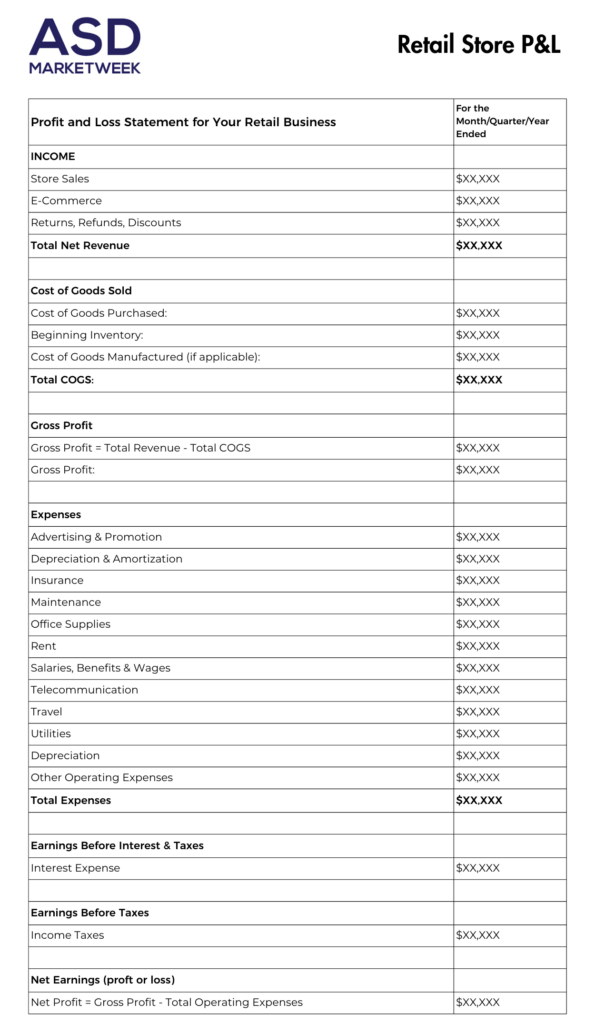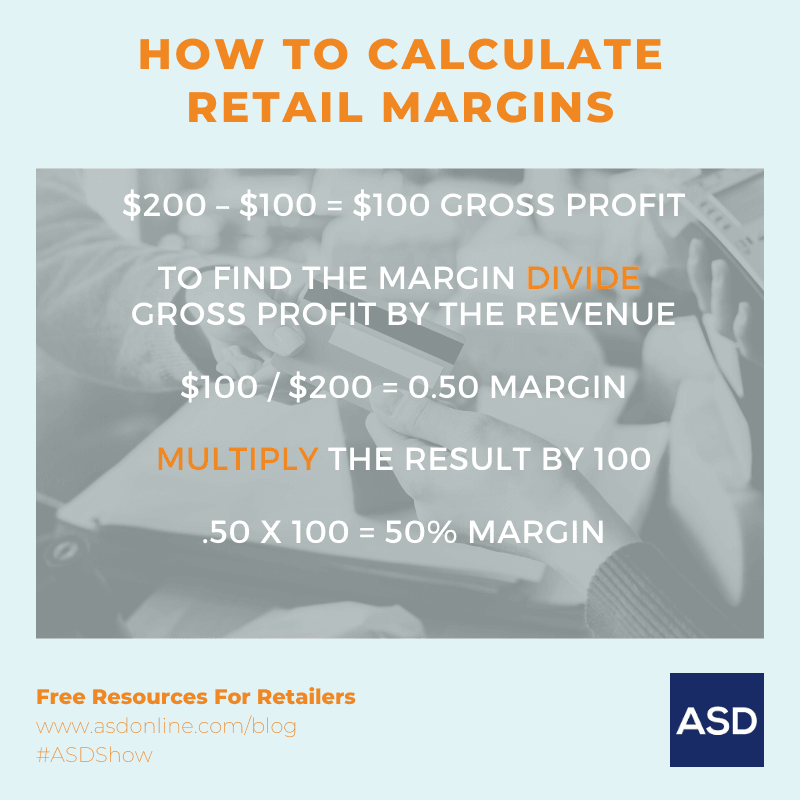Maintaining profit margins is crucial for all
retailers. In this article you’ll
learn:
-
Price Margin Basics: Learn the
fundamental concepts behind calculating sale price
margins to ensure your pricing strategy aligns with
your business goals.
-
Margin Optimization: Discover tips
and strategies to maximize your profit margins
without compromising product quality or customer
satisfaction.
-
Tools and Formulas: We’ve
included useful tools and formulas to simplify the
margin calculation process and help you make
data-driven decisions for your business.
As a retailer, whether you operate a brick-and-mortar
store or an e-commerce empire (or both), you wear many
hats in the pursuit of business success. From managing
marketing campaigns to supporting your employees, or
seeking new, appealing products – you’re
the driving force behind it all.
When you’re curating your product selection,
it’s all about the delicate balance between
price and profit, closely aligned with consumer
trends. You understand that staying on top of the
latest trends drives sales, but you also realize that
it’s your top-selling items that create loyal
customer relationships, with
20% of your products typically accounting for 80%
of your sales.
As a
savvy buyer, you know it’s not just about selecting
popular products; it’s about curating a
merchandise mix
that thrives year-round. Your product assortment
becomes an intricate matrix, especially when you
consider holidays and personal celebration dates. To
ensure sustained profitability, it’s crucial to
identify products that offer not just high retail
markups but also larger-than-average profit
margins.”
Finding Profitability in Your Product Pricing
As a retailer, your margins and markups are where your
livelihood comes from. In 2020, it’s important to
align your buying and inventory decisions to your
store’s overall sales goals. Ask yourself the
following question:
How much do I want to make this year? What are my
profit goals for our store?
Here’s a free
profit and loss sheet
to help you establish your goal if you need to look at
all your costs. Once you set this number, look at your
inventory. How have you priced the products in your
store or online? Do you know how they are helping or
hurting your goals? Your inventory is your profit
center.You are most likely going to have:
-
Low-profit goods: Items that bring people in
stores and/or items people buy in volume.
-
Medium-profit goods: Items that sell for a
slightly higher margin, sell consistently, but they
don’t sell at the volume of other items.
-
High-profit goods: Items that sell at good
margins or high markups but their sales may be
seasonal or trend-based.
Within low, medium and high-profit margin goods, the
sales patterns can vary depending on many factors.
Sometimes your high margin goods could be consistent
sellers (one item that you pay $5 for and always sells
for $45). Sometimes lower profit goods sell so
regularly that they bring people into your store to
make other one-time purchases and you see a sales
bump.
Because of the factors surrounding sales and traffic,
you must track your inventory and sales data
accurately so that you can easily understand how to
sell more based on what’s moving in your store or what
your customers are buying online. The only way to
strategically price your merchandise is by knowing how
to use margins and markup to your advantage.

Retail Pricing Terminology
Before we talk about margins and markups, it’s
important that you understand several terms. These
terms have a huge impact on your calculations:
-
Price/Revenue: The selling price of goods to
your customers and how much you make from those
goods.
-
Cost/Cost of Goods Sold (COGS): The total
price to produce the item. This includes the
expenses that go into making your products and
providing your services. Calculating COGS also
includes materials and direct labor costs.
-
Gross Profit: The profit left over after you
pay the expenses of selling your products.
Now that we’ve covered these, let’s move onto better
understanding margins and markups.
What Are Retail Margins?
Calculating product margins are based on the wholesale
price you pay for your inventory and the retail price
you charge your customers for that merchandise. Many
retailers believe that a strong margin is double the
cost of an item – so if you purchase something for $5,
selling it for $10 means you doubled your money!
Other retailers aim to gain higher margins to help
them make more money and cover their costs while
increasing their profit. That same $5 item could be
retailed for $15, $25 or even $50 based on a variety
of factors. When calculating margins, you need to
factor in your gross profit and the costs associated
with making the sale (your overhead expenses).
Let’s create an example. You sell a self-care kit for
$200. Each self-care kit costs you $100 to purchase at
wholesale. First, find your gross profit, or the
difference between the revenue ($200) and the cost
($100).
The margin is 50 percent. That means you keep 50
percent of your total revenue. You spent the other 50
percent of your revenue on buying the self-care kit.
Margin measures how much of every dollar in sales, you
keep after paying expenses. The higher your margin,
the more money you make.
The larger the retail margin, the greater the profit
you can make on each sale. However, if you set your
prices too high to increase your margins, other
competitors can set prices lower and steal your
customers. What retail margin doesn’t consider is the
cost associated with making a sale. Taxes, overhead,
and marketing are all paid by your profits so take
that into account as you price items.
What Are Retail Markups?
Markups are different than margins. A markup shows the
percentage of profit, meaning it shows how much more
you make from the selling price less than the amount
the item costs you. Like a margin, you start finding a
markup with your gross profit (revenue minus
COGS). Let’s use the same example of a self-care kit
but we change the price: you sell each kit for $175.
The self-care kit costs you $100. First, find the
gross profit.
The markup is 75 percent. That means you sold the kit
for 75 percent more than the amount you paid for it.
The higher the markup, the more revenue you’re
making.
When Should You Use Margin and/or Markup?
Margin and markup are closely related. Understanding
how to use both will always help you with becoming
and remaining profitable. When it comes to choosing
which one to use, a retailer uses markup to ensure
they are making money with each customer purchase.
In general, markup is extremely helpful when you’re
first starting because you can use it to set pricing
to cover your operating costs. You use margin once
your business is more established and you’re ready
to start diversifying your pricing strategies to
meet your overall revenue goals (based on those
customer purchase patterns we mentioned at the
beginning of the article).
You Need A Great Accountant and Great Software
To be successful as a retailer in 2024, having great
software and a great accountant is one of the single
best investments you can make for continued growth.
You may find an accountant is more important to your
business than outsourced business functions like
marketing. Look for local accountants that specialize
in retail businesses as they are going to have the
most knowledge about retail taxes and laws.
When it comes to software, most retail point of
purchase (POP) systems come with some built-in
inventory features, but we’ve found many are limited
in helping retailers make sense of their cash flow as
it correlates to their inventory. Shopify is a go-to
for many retailers who sell online, but you also have
many other choices like Square, Clover, and many more.
Mastering your finances as a retailer and
understanding how you price goods is one of the most
important things you can do as your income is what
drives the reinvestment you make in your business.
Make your profitability your top priority!










0 Comments